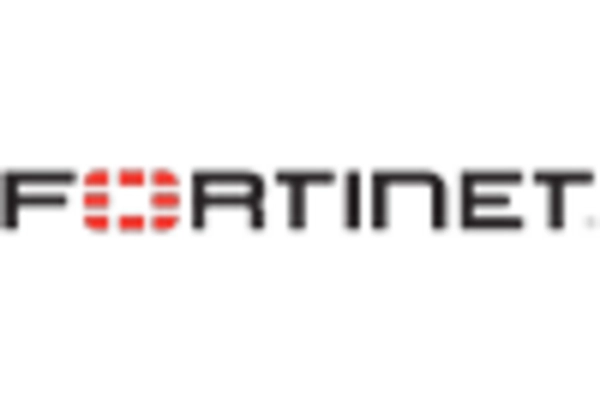Expansion of Smart Devices
The proliferation of smart devices across various sectors is a key driver for the US IoT Security Market. As of 2025, it is projected that there will be over 30 billion connected devices worldwide, with a substantial portion located in the United States. This rapid expansion necessitates enhanced security protocols to safeguard these devices from potential threats. Industries such as healthcare, manufacturing, and smart homes are increasingly integrating IoT solutions, thereby amplifying the demand for security measures. The need to protect these interconnected systems from unauthorized access and data breaches is likely to propel the market forward.
Rising Cybersecurity Threats
The US IoT Security Market is experiencing a surge in demand due to the increasing frequency and sophistication of cyber threats. As organizations adopt more IoT devices, the attack surface expands, making them more vulnerable to breaches. In 2025, it is estimated that cybercrime will cost the global economy over 10 trillion dollars annually, prompting businesses to invest heavily in security solutions. This trend indicates a growing recognition of the need for robust security measures to protect sensitive data and maintain consumer trust. Consequently, companies are prioritizing investments in IoT security technologies, which is likely to drive market growth significantly.
Growing Consumer Awareness of Security Risks
Consumer awareness regarding the security risks associated with IoT devices is a significant driver for the US IoT Security Market. As individuals become more informed about potential vulnerabilities, they are demanding higher security standards from manufacturers and service providers. In 2025, surveys indicate that over 70 percent of consumers prioritize security features when purchasing IoT devices. This shift in consumer behavior is prompting companies to enhance their security offerings, thereby driving market growth. The increasing expectation for transparency and accountability in IoT security is likely to shape the future landscape of the industry.
Increased Investment in IoT Security Solutions
Investment in IoT security solutions is on the rise, driven by the growing awareness of the potential risks associated with connected devices. In 2025, the US IoT Security Market is expected to witness a compound annual growth rate of over 25 percent. This growth is fueled by organizations recognizing the importance of securing their IoT infrastructure. Companies are allocating significant budgets to implement advanced security measures, including encryption, authentication, and intrusion detection systems. This trend suggests a shift in corporate strategy towards prioritizing cybersecurity, which is likely to enhance the overall market landscape.
Regulatory Pressures and Compliance Requirements
The US IoT Security Market is increasingly influenced by regulatory pressures and compliance requirements. As governments and regulatory bodies establish stricter guidelines for data protection and privacy, organizations are compelled to adopt comprehensive security measures. In 2025, it is anticipated that compliance with regulations such as the California Consumer Privacy Act (CCPA) will drive investments in IoT security solutions. Companies that fail to comply may face substantial penalties, further incentivizing the adoption of robust security frameworks. This regulatory landscape is likely to create a favorable environment for the growth of the IoT security market.

















Leave a Comment